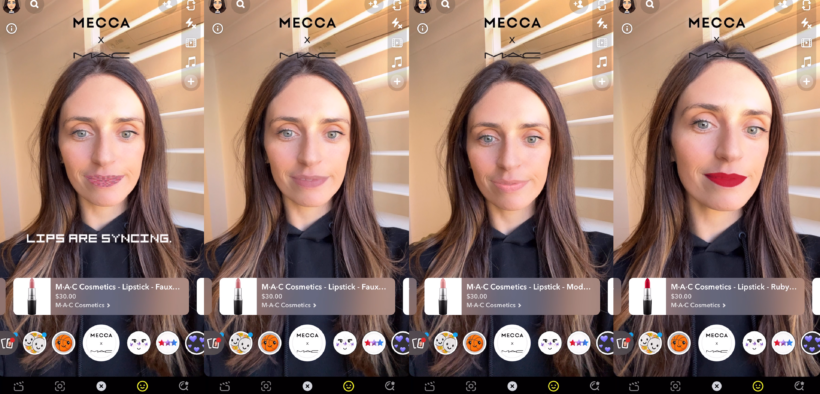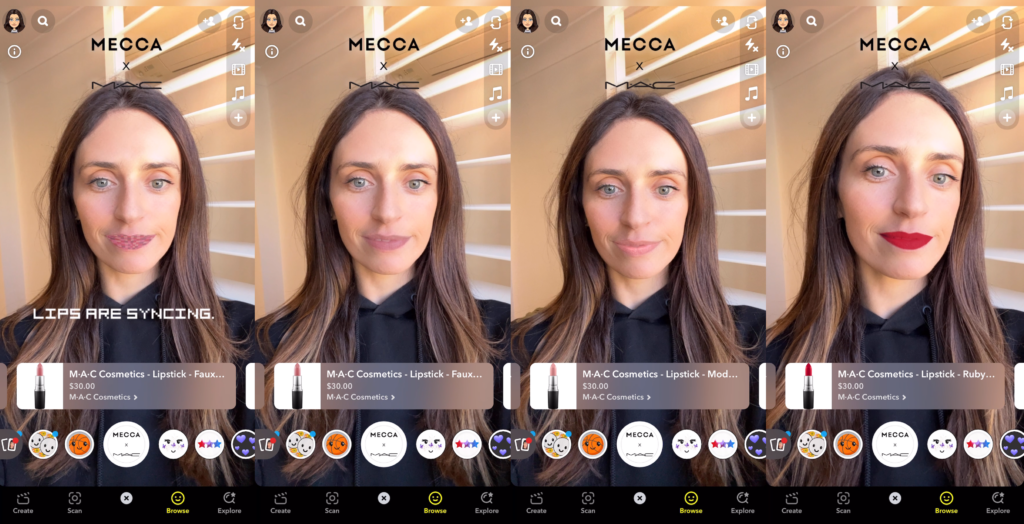Share

Snap’s head of creative strategy, Haran Ramachandran, explains the remarkable experience of Augmented Reality and the opportunities for brands to capitalise on the immersive technology.
In a digital world that is cluttered in all forms and forums, how can brands cut through the clutter? How can they reach their target audience, and captivate them in a way that is meaningful and experiential?
Augmented Reality (AR) is a powerful tool that visually enhances the real world. Consumers often use AR for fun and play or as part of their communication, while businesses use it to streamline processes, reduce human error and support training. A recent study from Oxford Economics found that AR will soon be used across a wide variety of industries and we’ll see a 10-fold increase in value by next year.
Earlier this year, Snap published the 2022 edition of its Gen Z report, shedding light on generation specific emerging audience behaviours, trends and the impact on society. The report was designed to uncover what is at the heart of the Snapchat Generation and their attitude towards culture, brands, technology and community.
The findings cemented the view we hold at Snap that connection is the key to online success. That is to say that brands who can create personal connections online are those who will win the hearts and minds of the next generation.
Understanding Augmented Reality
For those unfamiliar with this technology, AR is an interactive digital experience where a real-world environment is enhanced (or augmented) using the power of a smartphone camera. AR is an often misunderstood, but increasingly powerful tech, used by future-focussed marketers in Australia from Pepsi to SWEAT to Gucci. Similar to Web3, AR (or the overlaying of tech on the real world we live in) is having powerful implications across sectors here and now.
Over half (56 percent) of people globally are aware of AR and are open to using it or have already used it. While the global AR market value was $37 billion U.S. in 2019, it has a projected global market value of $1,274 billion U.S. for 2030 (The role of AR in Purchase).
We are at a moment in time where AR adoption is strong and growing across industries including advertising and virtual try-on applications.
AR is fun but also functional
AR provides utility, story, and even culture – brands like MECCA, DIOR and Nike are tapping into AR in the form of Snapchat Lenses.
Most recently, MECCA Brands launched an AR shopping lens on Snapchat with Resolution Digital. The Lens allowed users a way to seamlessly interact with, try on and click to purchase MAC lipsticks available at MECCA.

Beyond brands, however, the Snapchat’s creator community of over 250,000 is forging ahead with AR in ways that continue to amaze us at Snap. This community of AR creators is a new breed of influencer not defined by views or follower counts, but by experimentation and self-expression.
There are many AR Lenses created by the Snapchat community (not a brand or company) that use AR in really exciting ways.
For example, this Lens created by Innes Alpha, is an ML-based based called ‘HyperEmotionalSkin.’ It is three dimensional makeup that morphes and transforms depending on your emotions.
Or this Lens, ‘Healthy Cell’ created by Ibrahim Boona, developed to help detect healthy or unhealthy cells for medical professionals. Incredible.
The lenses above offer a glimpse of the creativity that lives within the AR creator community and the possibilities of AR. Keep in mind, these Lenses exist – imagine what does not yet exist but can be created!
The impact of AR
With all things, it’s important to be able to place a measurement on the value of what we are doing. AR is unlike traditional ad formats in that it is active not passive. You don’t just watch it, you’re part of it. You are in essence, part of the ad, immersed in it, adapting it to your world.
‘Playtime’ speaks to the length of time an AR experience is used on average. This varies based on campaign but often reaches up to one minute, which is four times the length of the average TV spot. This is tactile engagement where our community are ‘hands on’ with a brand, interacting with it in a different way to more traditional formats.
AR is also an actively creative format. Snapchatters are encouraged to experiment and create AR experiences using brands, which they can share with their friends. We see this more with AR shopping experiences, which often have high share rates as friends are sharing outfits with each other, looking for opinions. In fact, 44 percent of those shopping with AR say it’s encouraged them to buy something (AR Shopping Study).
So, how exactly do you measure AR? By measuring its immersive impact.
Immersion is a neurological “state” based on a person’s attention and emotional resonance. In essence, immersion captures what captivates. It can be measured by tracking variations in heart rate rhythm through smartwatch devices, assessing a person’s attention and emotional resonance with what they’re looking at. This is because immersive experiences build emotion, focus attention, enhance recall and motivate action.
The power of understanding immersion is being able to predict consumer action and memory – with 80 percent accuracy (BBDO Case Study – Predicting Sales Bumps via The Role of AR in Purchase).
AR offers a truly immersive experience – a study by Deloitte Digital and Snap Inc. revealed that interacting with products that have AR experiences leads to a 94 percent higher conversion rate when it comes to purchase.
To create awareness and excitement around the launch of their new sneakers, the B27, Christian Dior Couture partnered with Snapchat. Leveraging the power of AR and the newly launched Business Profiles in the app, Christian Dior Couture created an innovative and engaging experience, and placed AR at the heart of the product launch.
![]() In terms of measuring its impact, the AR Lens in carousel achieved a 6.2X return on advertising, and 2.3 million views of the Lens organically through the Business Profile.
In terms of measuring its impact, the AR Lens in carousel achieved a 6.2X return on advertising, and 2.3 million views of the Lens organically through the Business Profile.
AR is a remarkable tool, the possibilities for which are endless. AR is here, and it’s working. Now is the time for brands to not only reimagine how they engage with their customers, but to catapult immersive experiences into the future. It’s an exciting time, and one where the face of consumer-brand communication is changing thanks to the power of Augmented Reality.















